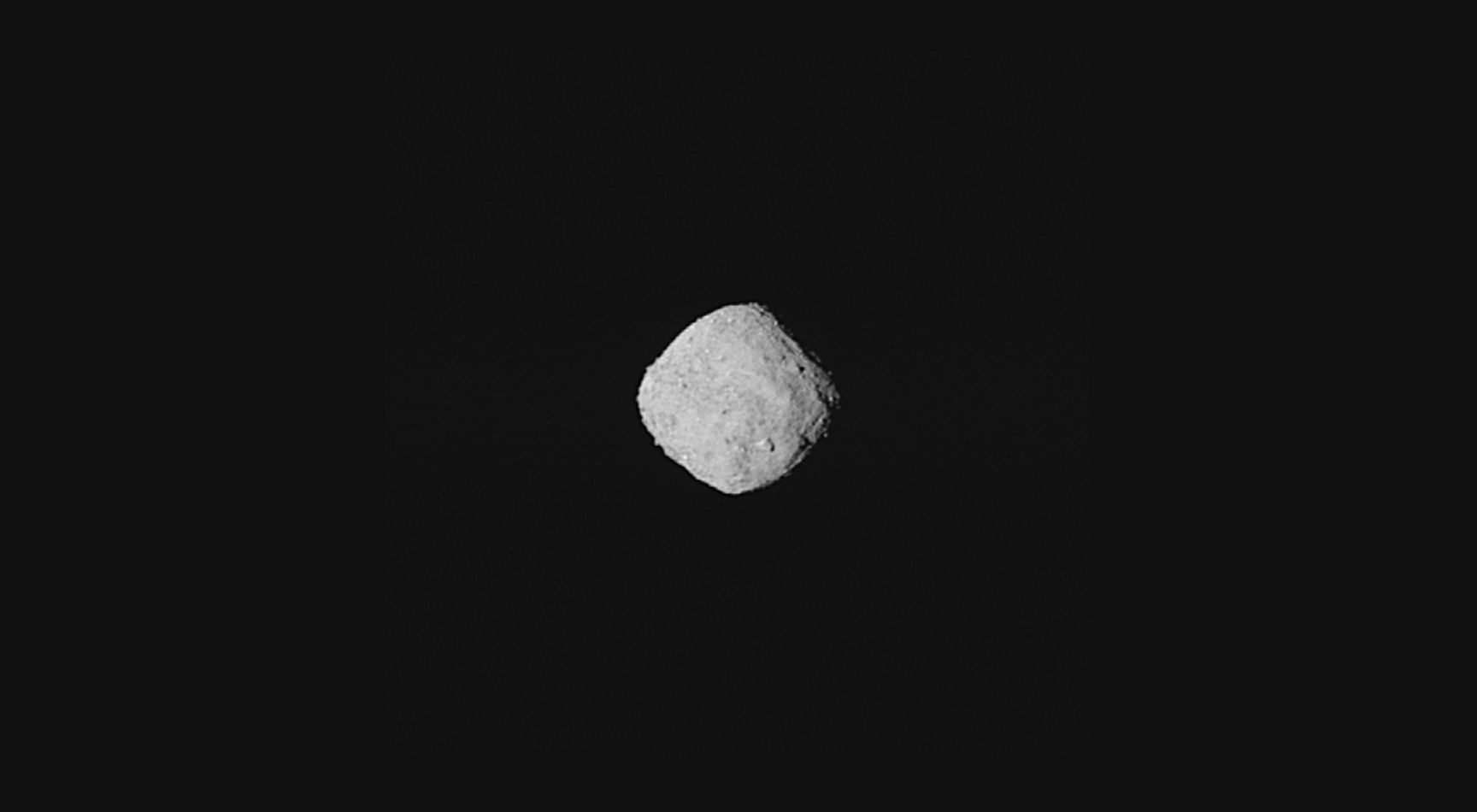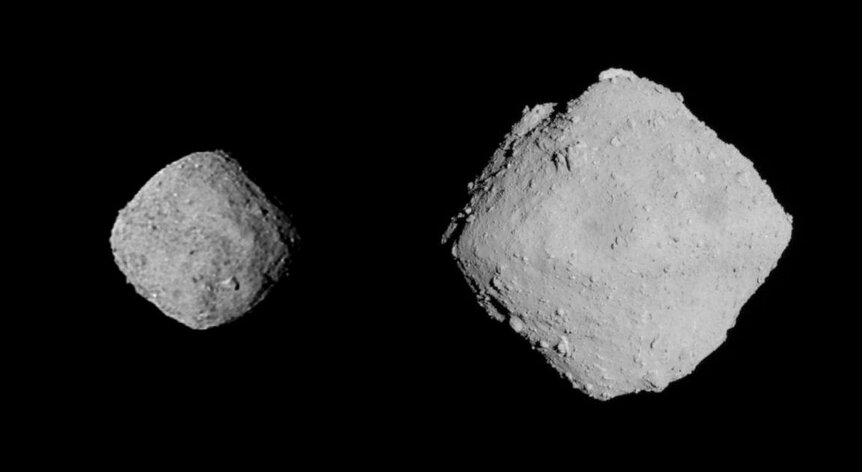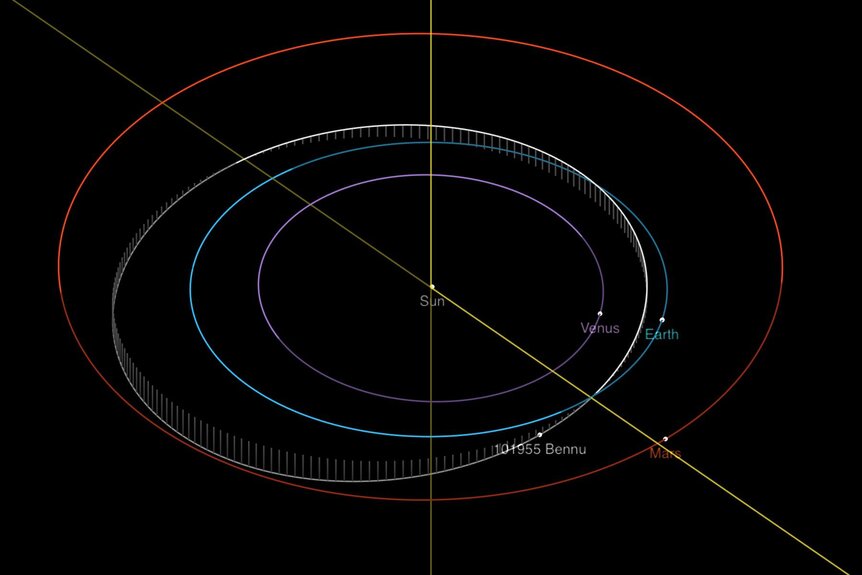Create a free profile to get unlimited access to exclusive videos, sweepstakes, and more!
Hey Bennu, have we met? I never forget an asteroid.

NASA’s OSIRIS-REx spacecraft* is finally approaching its target: Bennu, a 550-meter-diameter asteroid. Bennu was discovered in 1999 and is not only a Near-Earth Asteroid, which means it can get relatively close to our planet, but also a Potentially Hazardous Asteroid — one bigger than 140 meters across that can approach to within about 7.5 million kilometers or so of Earth. In fact, it has a roughly 1 in 3000 chance of hitting us late in the 22nd century.
Those are pretty long odds, and it’s so far in the future that it’s not worth being overly concerned about an impact just yet. Still, studying it is, obviously, rather important.
OSIRIS-REx is on a path that is sidling it up to the rock, catching up to it as it orbits the Sun. Just the other day, on October 29, the spacecraft underwent an Asteroid Approach Maneuver that changed its approach speed from 5.2 meters per second to just 0.11 m/s. That’s about 19 kilometers per hour — a decent pace on a bicycle — to just 0.4 kph. That’s pretty slow! The approach is being done very carefully, to make sure it’s going according to plans.
Also, it gives the team time to take a series of high-resolution images of Bennu and create shape maps of it. On the same day as the maneuver, Oct. 29, OSIRIS-REx took eight images of the asteroid from a distance of 330 km. Back here on Earth, 135 million kilometers away, scientists combined these images to create this very interesting portrait of Bennu.
Cooooool. It’s not round, which isn’t surprising; it’s far too small to have high enough gravity that it can deform itself into a sphere (you need something a few hundred kilometers across before that happens). But it’s not irregular, either! It’s shaped like two cones sitting base-to-base, round around the equator but more pointy at the poles. Well, softly pointy, if that makes sense.
When I first saw this image I did a double-take, then laughed. Why?
Well, let me show you.
On the left is Bennu, and on the right is the asteroid Ryugu. Yeah, I know, right? Twins.
Ryugu is the asteroid currently occupied by robots in the form of the Japanese probe Hayabusa-2 (it’s dropped three landers already, and the spacecraft itself will soon drop to the surface of Ryugu to collect samples). Ryugu is much bigger than Bennu, about 1 kilometer wide across its equator and 880 meters through the poles.
And obviously, the two are shaped much the same.
That’s no coincidence! Both are small, with very weak gravity. Both are also rubble piles: Not solid, monolithic objects but instead like bags of rocks held together by their own gravity. Billions of years of slow-speed collisions have essentially shattered them in place.
The important bit here is that both rotate relatively rapidly. Bennu spins once every 4.3 hours, and Ryugu once every 7.6 hours. That means that a rock sitting on the surface feels a weak pull downward toward the center due to gravity, but also a weak centrifugal force outward, away from the spin axis of the asteroid. These combine such that the equator feels like it’s downhill. If something happens to jostle the asteroid — a collision, or thermal stress going from day to night, say — it can dislodge material which then rolls downhill, toward the equator. The end result is an asteroid shaped like nothing so much as a well-used and eroded eight-sided D&D die.
The surface of Bennu looks quite a bit like Ryugu from this distance, too. Fairly rough, with lots of bigger rocks sticking out. I wonder if the one boulder you can see on the lower right is the one detected by radar in 2005? It’s at about the right latitude… but the radar indicated a size of 10-20 meters, and I measure the one in the image being more like 30-40 meters. Hmmm. But it’s irregular in shape and unclear how tall it is measured from the surface, which can affect radar returns. We’ll know more as the spacecraft gets more data.
There are still a series of maneuvers left to go to position OSIRIS-REx about 20 kilometers from Bennu, where it’ll park itself. That’s expected to be all done by December 3, and that’s when things really begin. The spacecraft is equipped with a quiver full of instruments to study Bennu, and will also dip down to retrieve a sample of it, returning that to Earth in 2023, where it will be attacked by a lot of scientists positively drooling to get their lab instruments trained on it. That’ll be very very cool.
So Stay Tuned. In the coming weeks you’ll be hearing a lot more about Bennu, and Ryugu too. These asteroids may be small, but planetary scientists have big plans for them.
*OSIRIS-REx is short for Origins, Spectral Interpretation, Resource Identification, Security, Regolith Explorer, which I maintain is the most tortured backronym for a space mission ever.





























